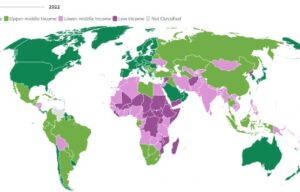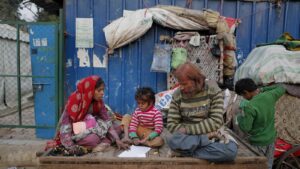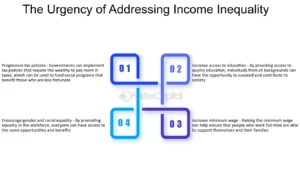Low-income countries are nations with lower Gross National Income (GNI) per capita compared to other countries, indicating lower average income levels for their populations.
Low income countries are places where people typically earn less money compared to other countries. This can make it harder for them to afford necessities like food, housing, and healthcare.
Unlocking opportunities for growth and prosperity in low income countries!
Countries With Low Income – Support Countries In Need!
Low income countries are defined based on their Gross National Income (GNI) per capita, which measures individuals’ average income. According to the World Bank classification, low income countries are those with a GNI per capita of $1,045 or less.
These countries often face significant economic challenges, including limited access to education, healthcare, and infrastructure, as well as high levels of poverty and vulnerability to financial shocks.
Examples of low income countries include several nations in sub-Saharan Africa, parts of South Asia, and some small island states in the Pacific and Caribbean regions.
Despite efforts to improve economic conditions, many low income countries continue to grapple with issues related to development, social inequality, and sustainability.
International organizations and governments often provide assistance and support to help these countries address their challenges and work towards sustainable growth and prosperity.
Factors Contributing To Low Income Status – Learn Why Some Countries Have Less Money!

1. Limited Access to Education:
In low income countries, educational opportunities are often limited, leading to lower literacy rates and a lack of skilled workforce. This hinders economic growth and innovation.
2. Inadequate Healthcare Infrastructure:
The healthcare systems in low income countries are typically underfunded and lack essential resources. This results in higher rates of preventable diseases, reduced life expectancy, and increased healthcare costs for individuals.
3. Economic Vulnerabilities:
Low income countries are more vulnerable to external economic shocks, such as changes in global commodity prices or fluctuations in currency exchange rates. Their dependence on a few industries or sectors makes them susceptible to economic downturns.
4. High Levels of Poverty:
Poverty is widespread in low income countries, with a significant portion of the population living below the poverty line. This leads to food insecurity, inadequate housing, and limited access to clean water and sanitation.
5. Limited Access to Financial Resources:
Low income countries often need help accessing financial resources, including loans, grants, and investments. This limits their ability to invest in infrastructure development, technology adoption, and human capital improvement.
Challenges Faced By Low Income Countries – Overcoming Problems In Poor Countries!

1. Limited Access to Essential Services:
Low income countries often need help to provide basic services such as healthcare, education, clean water, and sanitation to their populations. This leads to poor health outcomes, lower literacy rates, and reduced quality of life, particularly among vulnerable groups such as women, children, and the elderly.
2. Inadequate Infrastructure:
Infrastructure development is often lacking in low income countries, with insufficient roads, transportation networks, energy systems, and telecommunications. This hinders economic growth, trade, and connectivity, making it challenging for businesses to thrive and for people to access markets and opportunities.
3. High Levels of Unemployment:
Low income countries typically have high rates of unemployment and underemployment, especially among youth and vulnerable populations. This leads to income inequality, social unrest, and economic instability, as many struggle to find stable, decent-paying jobs.
4. Vulnerability to Climate Change:
Many low income countries are highly vulnerable to the impacts of climate change, including extreme weather events, droughts, floods, and sea level rise. This affects agriculture, food security, and livelihoods, as farmers and rural communities face challenges in adapting to changing environmental conditions.
5. Limited Access to Financial Resources:
Low income countries often face challenges in accessing financial resources, including loans, grants, and investments. This limits their ability to invest in infrastructure, education, healthcare, and social welfare programs, hindering their development and capacity to address pressing societal needs.
Strategies For Addressing Challenges – Helping Solve Problems For Progress!

1. Improving Access to Education:
Implementing policies and programs to increase access to quality education for all, including marginalized and vulnerable populations. This includes investing in schools, teacher training, educational materials and promoting inclusive and equitable education systems.
2. Enhancing Healthcare Services:
Strengthening healthcare infrastructure, increasing healthcare funding, and expanding access to essential healthcare services, including primary care, maternal and child health services, and disease prevention and treatment programs. This also involves training healthcare workers and improving healthcare delivery systems.
3. Promoting Economic Diversification:
Encouraging economic diversification beyond traditional sectors such as agriculture, mining, and tourism. This includes supporting the development of small and medium-sized enterprises (SMEs), promoting entrepreneurship and innovation, and attracting investment in sectors with growth potential.
4. Investing in Infrastructure:
Developing and upgrading infrastructure, including transportation networks, energy systems, water and sanitation facilities, and digital infrastructure. This facilitates economic activities, improves connectivity, and enhances the quality of life for residents.
5. Fostering International Partnerships:
Collaborating with international organizations, donor agencies, development partners, and the private sector to mobilize resources, share knowledge and expertise, and implement effective development initiatives. This includes leveraging foreign aid, technical assistance, and capacity-building support.
6. Promoting Good Governance:
Strengthening governance structures, promoting transparency and accountability, combating corruption, and improving public administration. This creates an enabling environment for sustainable development, effective service delivery, and citizen participation in decision-making processes.
FAQS:
1. What role do international organizations play in supporting low income countries?
International organizations provide financial assistance, technical expertise, capacity-building support, and policy advice to help low income countries address their development challenges. They also facilitate global cooperation and advocacy for sustainable development goals.
2. What are some success stories of development in low income countries?
There are several success stories of development in low income countries, where strategic investments, innovative policies, and effective governance have led to significant improvements in education, healthcare, infrastructure, economic growth, and quality of life for their citizens. Examples include countries like Rwanda, Bangladesh, and Vietnam.
3. How can individuals contribute to supporting low income countries?
Individuals can contribute to supporting low income countries by advocating for policies that promote global equity and development, supporting ethical and sustainable businesses that operate in these countries, donating to reputable international aid organizations, volunteering for development projects, and raising awareness about global issues.
Conclusion:
Low income countries face challenges due to lower incomes, impacting access to essentials like food, housing, and healthcare. Improving education, healthcare, and economic opportunities is crucial for addressing poverty and enhancing well-being.
Read:





